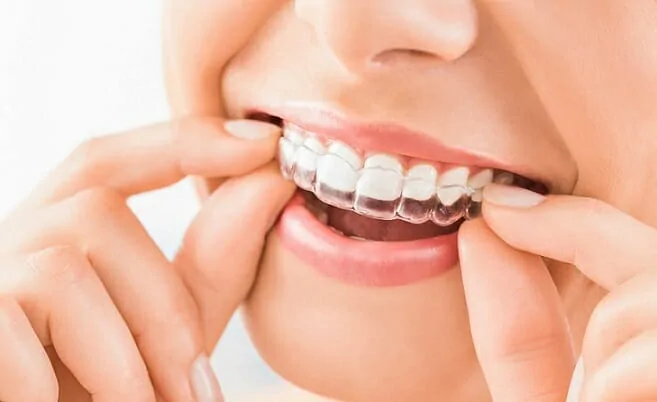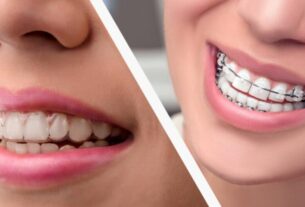A confident smile isn’t just about aesthetics—it’s a vital part of your overall health. Misaligned teeth can affect how you eat, speak, and even your self-esteem. Fortunately, orthodontic care offers a range of solutions to help individuals achieve a balanced, healthy smile. Whether you’re considering braces for yourself or a loved one, understanding the basics of orthodontics is the first step towards long-term confidence and improved oral health.
What Is Orthodontics and Why Is Smile Alignment Important?
Orthodontics is a specialized branch of dentistry that focuses on diagnosing, preventing, and correcting misalignment of the teeth and jaw. Contrary to popular belief, orthodontic care isn’t just for straightening teeth—it also improves bite function, overall dental health, and facial aesthetics. Untreated alignment issues can lead to complications such as tooth decay, gum disease, or speech difficulties, making orthodontics an essential component of comprehensive oral care.
Smile alignment is about more than appearances; it promotes long-term health. Properly aligned teeth are easier to clean, which reduces the risk of cavities and gum disease. Additionally, maintaining the ideal position of your teeth can prevent excessive wear or strain on your jaw joints.
Common Problems Addressed by Orthodontics
Modern orthodontic practices can correct a variety of dental irregularities. Some of the most common issues include:
1. Overbite
An overbite occurs when the upper teeth significantly overlap the lower teeth. Severe cases may cause jaw pain, enamel wear, and speech difficulties if left untreated.
2. Underbite
An underbite happens when the lower teeth protrude further than the upper teeth, often due to jaw misalignment. This condition can make chewing and speaking challenging, along with worsening bite patterns over time.
3. Crooked Teeth
Crowded or crooked teeth aren’t just a cosmetic concern—they’re harder to clean effectively, increasing the likelihood of plaque buildup and gum disease.
4. Gaps Between Teeth
Spacing issues, or gaps between teeth, can be caused by missing teeth, small tooth size, or improper jaw alignment. Excessive gaps may lead to gum discomfort or difficulty chewing.
5. Open Bite
An open bite is when the upper and lower teeth don’t meet properly when the mouth is closed. This can impact chewing efficiency and cause complications with speech.
Types of Orthodontic Treatments
Orthodontics has come a long way, with various treatment options tailored to individual needs. Here are some of the most common types of orthodontic solutions:
1. Traditional Braces
Made from metal or ceramic brackets attached to the teeth, braces are still the most common and effective solution for addressing severe alignment issues.
2. Clear Aligners (e.g., Invisalign)
Clear aligners are transparent, removable trays that gradually shift teeth into their ideal positions. These are popular for adults and teens who want a less visible treatment option.
3. Lingual Braces
Lingual braces sit on the back of your teeth, making them virtually invisible from the front. Using indirect bonding for orthodontics, these braces are precisely placed for optimal results. They are an excellent alternative for those who need the strength of traditional braces but prefer a more discreet look.
4. Retainers
Retainers are usually used after braces or aligners to maintain the position of teeth. Some retainers are removable, while others are fixed behind your teeth for long-term alignment support.
5. Palatal Expanders
Designed to widen the upper jaw, these devices create space for teeth to align properly. Palatal expanders are often used for children and young teens before all adult teeth have emerged.
Benefits of Proper Smile Alignment
Taking the time to correct alignment issues has a host of benefits beyond achieving a more attractive smile:
Health Benefits
- Improved Oral Hygiene: Straight teeth are easier to clean, which reduces the risk of plaque buildup, tooth decay, and gum disease.
- Better Chewing and Digestion: Properly aligned teeth improve chewing efficiency, enhancing overall digestion.
- Reduced Jaw Pain: Orthodontic treatments can alleviate discomfort caused by temporomandibular joint disorders (TMJ).
Aesthetic and Confidence Boosts
A well-aligned smile often leads to increased self-confidence and improved first impressions in social and professional settings.
Long-Term Savings
Investing in orthodontics early can save money in the long run by preventing more severe dental issues later in life.
Tips for Maintaining Results After Treatment
Getting through orthodontic treatment is only the first phase of achieving a lifetime of confident smiles. Here’s how you can safeguard your results:
- Wear Your Retainer: A retainer helps keep teeth in their newly aligned positions. Follow your orthodontist’s instructions to prevent shifting.
- Maintain Regular Checkups: Routine dental visits are essential to ensure that your teeth remain healthy and aligned.
- Practice Good Oral Hygiene: Brush and floss daily to avoid plaque buildup around your teeth and any retainers or aligners.
- Avoid Hard or Sticky Foods: Post-treatment care often involves steering clear of foods that could damage your teeth or orthodontic devices.
How to Choose the Right Orthodontist
Your orthodontist will play a pivotal role in your smile alignment journey. Here are some tips to find the right fit for you:
- Credentials Matter: Look for an orthodontist with notable qualifications and memberships in professional associations like the American Association of Orthodontists (AAO).
- Ask About Technology: Clinics that use advanced techniques may offer faster, more comfortable treatment experiences.
- Read Reviews: Patient testimonials and online reviews can provide valuable insights into the care and results you can expect.
- Schedule Consultations: Many orthodontists offer free initial consultations. Use these to ask questions and determine if the practice aligns with your preferences and expectations.
Conclusion
Improving your smile through orthodontics is a worthwhile investment, offering both health and aesthetic benefits. From addressing alignment issues to choosing the right treatments and orthodontists, understanding the basics empowers you to make informed decisions about your oral health.




